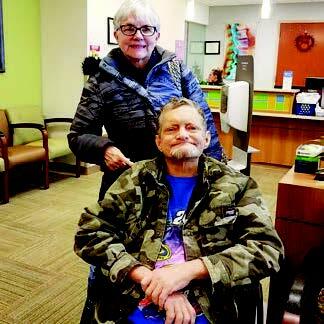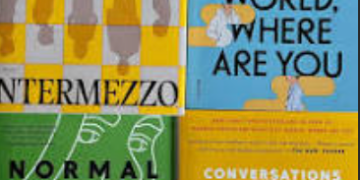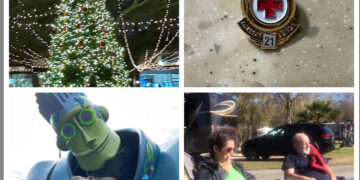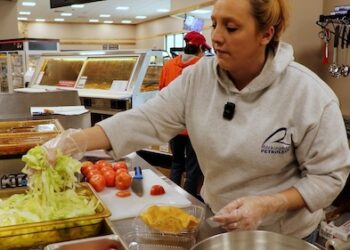One year ago on February 9, 2021, my son died. Jon-Jon (as his childhood friends called him) was a Type 1 diabetic from age 12 and suffered from many complications of the disease including end-stage renal failure, retina damage, hepatitis, possible Lewy Body dementia and more.
In April, 2020, Jonathan was diagnosed with COVID-19 and spent 15 days in the hospital. Although he survived, he never recovered from COVID-19 and was unable to get up by himself, dial his phone, or feed himself after that. He returned to the hospital twice before he died.

the pandemic
Having a loved one in the hospital or health care facility during the early days of the pandemic was heart breaking as many know; being unable to visit takes a toll. The doctors and nurses did their best to communicate with us by phone. The caring nurses from the Radiology department at Sentara RMH sent gifts to his hospital room including as snacks and a phone charger for his cell phone (so he could talk to us if a nurse helped him dial the number). When Jonathan was in the hospital in January, 2021, we were able to visit but he was so distraught from being there that the visits were hard. I remember him imploring me “Mom, please take me home” and feeling so bad that I could not.
The Radiology nurses also took great care of him while he was at the hospital for bi-weekly paracentesis treatments since we could no longer go with him as we did pre-pandemic. His transportation drivers from G & W Ambulance Services and other vendors assigned by his health insurance were great before the pandemic but especially in helping him get to the right place at the hospital and for other appointments when we could no longer meet Jonathan and stay with him during a procedure/physician’s visit. He often talked about the drivers as his friends, and they took good care of him. Once back in his facility, nurses and other staff at Accordius helped Jonathan call us, got him up and took him to the window so that we could do window visits, and made him as comfortable as possible. His dialysis nurses and staff at DaVita in Harrisonburg who saw him three days a week for his dialysis treatments (four plus hours each time) also took excellent care of him. Jonathan was so lucky to have so many health care heroes who cared about him.
After a hospital stay in January, 2021, Jonathan decided that he did not want to continue dialysis and paracentesis. After over 12 years on dialysis, he was tired (he could have received a kidney and pancreas transplant but even though he exceeded the average life expectancy for a diabetic on dialysis which is 3 to 5 years, he did not quit smoking to get on the list). He went on hospice care and then we could visit him again (albeit with a lot of protective gear on.) The day before he died, he was very alert and I was able to call some aunts and a cousin who had been great about visiting him pre-pandemic. Although he could no longer dial the phone, he talked as I held the phone to his ear, and it was good to see him grinning at things they said. The next day, I went in, and he was not alert, and he died while I was there.
A special family whom I knew through library story times brought me a book called Tear Soup: A Recipe for Healing After Loss as we were grieving. The book was written by Pat Schwiebert (a registered nurse with 30 years of experience in the area of bereavement) and Chuck DeKlygen (Pat’s son). Taylor Bills does picture book style illustrations for the book which was published by Grief Watch in 1999. The book at first glance looks like a picture book, but it is truly a book which “affirms the bereaved, educates the unbereaved” on the grief process and how it differs for different people. Grieving is compared in the story with full size illustrations to soup making, which unlike some cooking, is an art in which one improvises with the goal of satisfying hunger and helping what hurts. No two people make soup exactly the same; grieving is also different for different individuals.
After the story of Grandy making “Tear Soup,” the authors include tips for the one grieving, for helping a grieving friend, for supporting children who are grieving, and more. One thing mentioned in tips for “If there are two of you cooking” states “Grief is unique to the individual. You may both experience the same loss, but you won’t grieve in the same way. In other words, you are in it together, but you are in it alone.” This part especially resonated for me, as my husband and I grieved very differently when another son Jon Jr. died in 2000. The book also has a two-page list of resources to find help on grief including the publishers of the book, Grief Watch at www.griefwatch.com
We tend to express our thoughts to others who are grieving with our own preferences, which we might not even realize; for example, I tend to send sympathy cards because I personally appreciate cards. Others might use phone calls, visits, sending flowers, bringing food, or other methods. Supporting those who are grieving is also not a “one size fits all” endeavor; don’t just say “what do you need?” as those in mourning often don’t know what to ask for. Try to anticipate needs, and when in doubt, do what you think would help. One of the worst aspects for many experiencing grief is not hearing anything from friends and family who don’t know what to say or do. Do something, say something; whatever you do will be better than doing nothing.
Death is hard, especially the death of a child. Grieving is hard and it is different for each person who grieves. It is easy to think of all the things you could have/should have done while the person was alive that might have changed the outcome. Do the best you can for loved ones while they are alive to show your love. When I visited my mom an hour away three times a week while she was in a nursing home, friends would say, “Don’t go so often.” But I never say now “I wish I had not gone to visit my mother so much.” One has to do the best you can while loved ones are living, let go of guilt when they are gone, and concentrate on healing and remembering the good times.
































